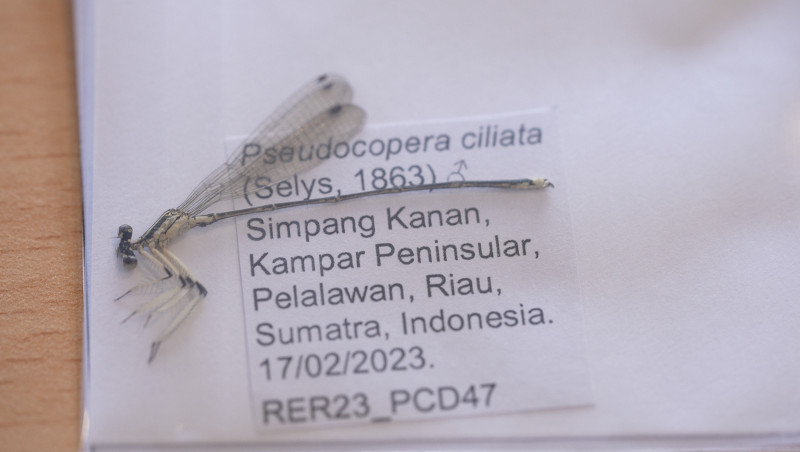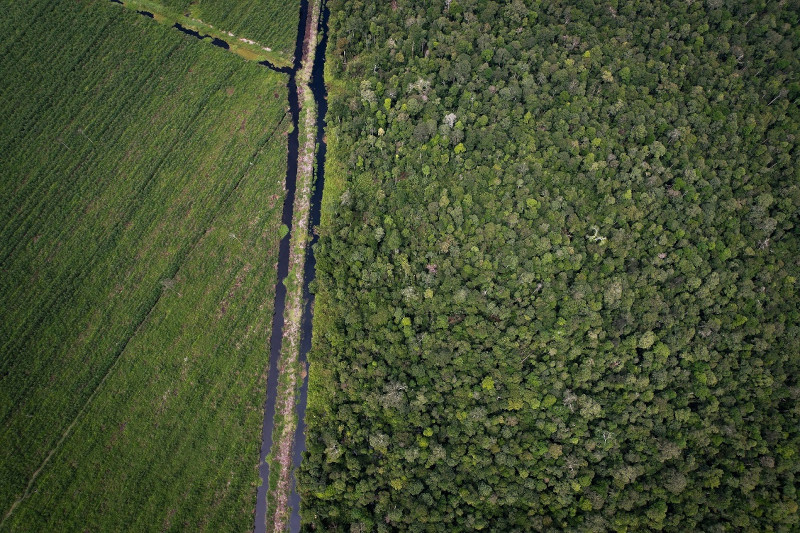February 28, 2024
Exactly a decade ago, Restorasi Ekosistem Riau (RER) set out to mitigate years of selective logging and canal construction in one of Indonesia’s last remaining peatland landscapes, securing the protection of a vitally important tropical peat swamp forest and the biodiversity it supports.
For the past 10 years, collaboration has been the key to unlocking ecosystem restoration in this location, through partnerships with government, scientific experts, and communities. Looking to the future, collaboration will continue to underpin RER approaches and provide a model for sustainable development on a global scale.
In this article, we look back on a decade of positive impacts delivered by the RER model, exploring the vital role that partnerships and cooperation have played in this process. We will also look ahead, to explore the ways in which lessons learned from this experience can help shape a greener, more sustainable future.
Looking back on a decade of positive impact
Covering an area of 150,693 hectares on the Kampar Peninsula and neighboring Padang Island on the eastern coast of Riau Province in Sumatra, RER utilizes a production-protection approach to ecosystem restoration. This means that sustainably managed production forestry located nearby provides the funding necessary for the scientific and restoration work within RER.
The RER team has worked tirelessly to repair the damage caused by earlier activities on the Kampar Peninsula, closing up old drainage canals in order to keep the peatlands healthy and hydrated. In the past five years alone, RER has blocked a total of 36 canal systems, measuring 179 kilometres in length. These developments have breathed new life into the landscape, while also benefiting various levels of society.

“The reason that RER is so important is not only because it is one of the last intact peatland forests,” explains Anderson Tanoto, who is the Managing Director of RGE and a central figure in the development of RER over the past decade. He sees the project as an example of the successful integration of biodiversity, community, and climate strategies and actions, and private-public-NGO partnerships.
This focus on partnerships has been in place since the very beginning. RER’s commitment to collaboration and scientific discovery is embodied in the efforts of the early survey teams, who were led by experts from one of RER’s partners, Fauna & Flora. These teams dedicated countless man hours to measuring the depths of peat soil, documenting evidence of fauna and flora, and setting up camera traps that would go on to reveal wildlife treasures in the forest that had hitherto been hidden from view.
By the latest count, per December 2023, RER is home to a grand total of 893 species, including 78 types of mammals, 319 birds, 106 amphibians and reptiles, 89 fish, 100 odonata and 201 plants.
Collaboration has continued to underpin activities in RER over the past 10 years, and helped to expand our collective understanding of the region. “Together we have learned over the past decade that tropical peat swamp forest restoration takes a great deal of time and collective action,” says Bey Soo Khiang, who is Chairman of the RER advisory Board.
He believes the past 10 years offer more than just a source of pride in RER’s accomplishment to date; lessons learned from this period can also be the inspiration for many more positive impacts to come: “Together we can be proud that we took the first step to protect and restore this large tropical peatland swamp for the benefit of our future generations.”
Climate, nature, people, and sustainable business growth
Climate change and biodiversity loss are two of the most pressing challenges of our times. RER provides workable, scalable solutions to these crises, while also delivering lasting socio-economic benefits to those engaged in ecosystem restoration. On a global scale, public and private sectors are looking to accelerate investment in nature-based solutions and catalyze greater investment in forest restoration.
“As the call intensifies for increased investment in nature,” says Anderson Tanoto, “it’s timely to consider how RER’s blueprint can be applied to other restoration efforts in Indonesia, and also as a nature-based solution globally.” Although RER has been tailored to fit the unique challenges of peatland landscapes in Indonesia, developments over the past decade can be repurposed to support tropical ecosystem restoration projects around the world. And key to this upscaling will be the combined application of science and corporate commitment.

RER demonstrates it is possible to integrate long-term private sector landscape restoration as part of a business model that’s committed to serving climate, nature, people, and sustainable business growth. RER’s teams and visiting researcher continue to uncover many of nature’s secrets inside the restoration area, and these revelations continue to inform a broader understanding of peatland landscapes.
The blueprint for a greener future
Bey Soo Khiang is confident these developments are just the beginning. Through continued collaboration, RER can provide a model for even bigger and better impacts in the years to come. As he explains, “Our time with this landscape to date is but a fraction of what we hope will be a continuing story of discovery, learning, and collaboration for forest restoration in Indonesia and globally.”
Building on a decade of successful progress, RER presents opportunities and inspiration for new partnerships; drawing various sectors together to evolve the science, technology, and financial mechanisms that support them. And we need to continue to support governments to establish more restoration programmes in place on the ground if we are to meet the planet’s climate goals.
“RER’s first decade has established a foundation to build on, and it couldn’t have come at a more important time,” says Anderson Tanoto. “Our collective ability to establish more RERs will go a long way to securing the planet’s biodiversity. RER is one of many paths in our collective pursuit of a nature-positive future.”
For more information about RER, the positive developments it has delivered over the past decade, and the potential it holds for the future of ecosystem restoration, take a look at the RER Special Report 2023.